Last June, the University of Cadiz resumed its studies on the Garum (a sauce much appreciated in the Roman Empire) in Bolonia (Cádiz,Costa de la Luz, Southwest of Andalusia).
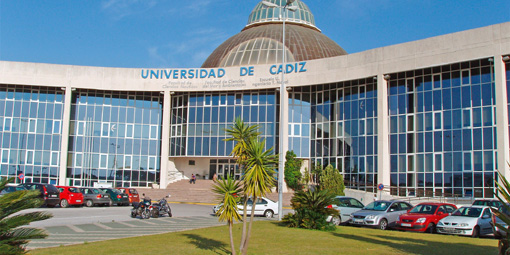
Cadiz University
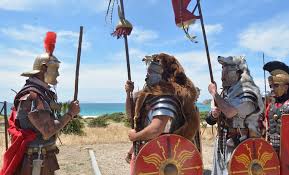
Roman people

The area of Bolonia on the right side
In that area of Bolonia are the ruins of the Roman city of Baelo Claudia, built in the 2nd century BC.
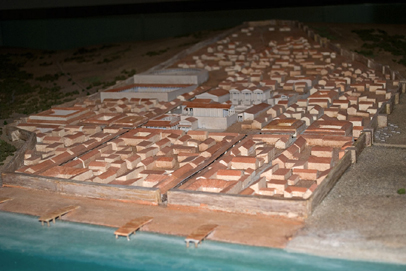
Mockup of Baelo Claudia
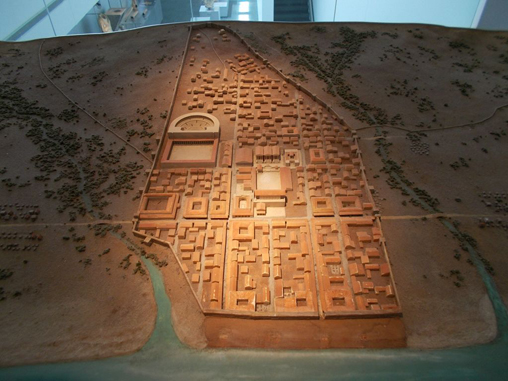
Another mockup

Aerial view of Baelo Claudia currently
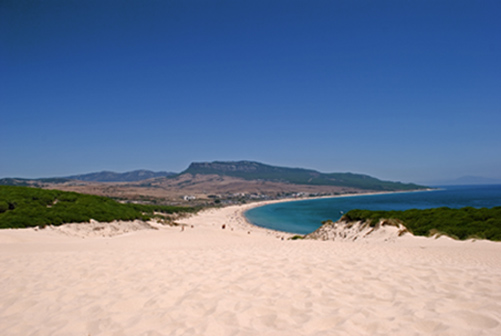
The cove of Bolonia from its dunes
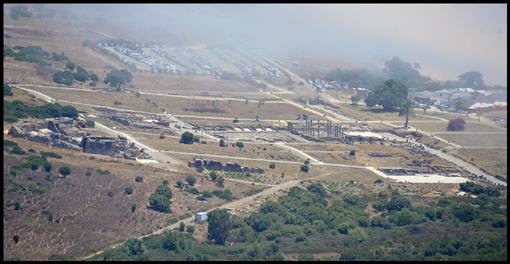
Ruins of Baelo Claudia
Researchers of the research group HUM-440 of the University of Cádiz and the Archaeological Ensemble of Baelo Claudia of the Junta de Andalucía have discovered two complete Roman salazone factories (named “Cetaria”), in an excellent state of conservation, in Baelo Claudia. It is the first time that organic remnants of salted tuna have been documented throughout the Ancient World (called “salsamentum” by the Romans), thanks to the discovery of skins inside some pools.
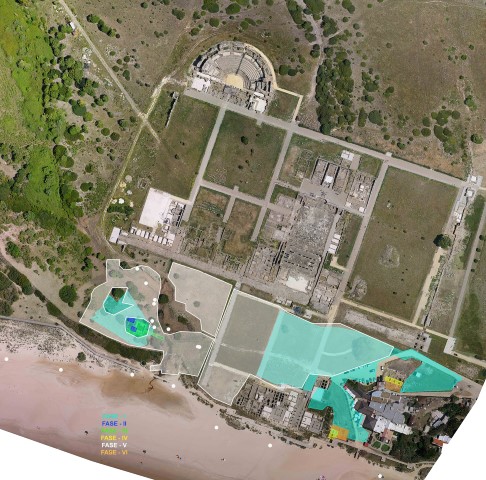
The two factories close to the sand of the beach
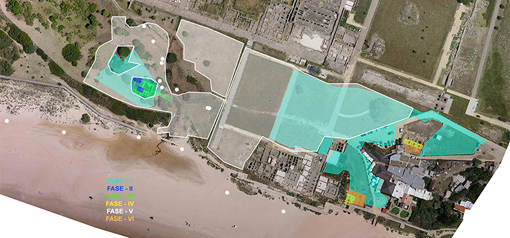
The two factories up close
In August-2017, the archaeological campaign of the general project of maritime economics and fishery activities, in Baelo Claudia, was finished, directed by Professor Darío Bernal Casasola, from the Archeology area of the University of Cádiz. After more than a month of excavations, the study has been completed, in the fishing-canning district of the Hispano-Roman city of Baelo Claudia, one of the most important archaeological sites, in the western Mediterranean.
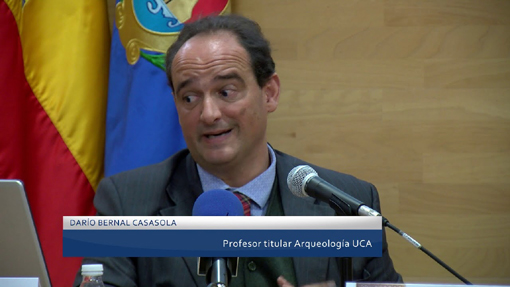
The Professor Bernal
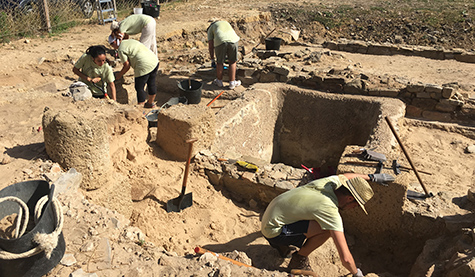
Archaelogical excavation in the fishing neighbourhood of Baelo Claudia
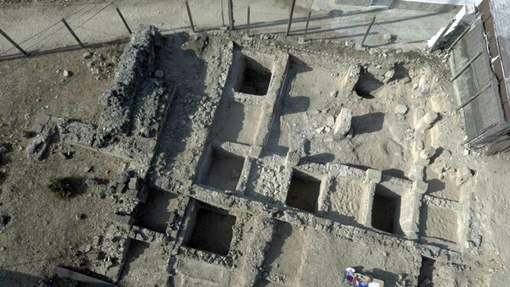
Aerial view of some basins for making Garum
The findings have been "spectacular", according to its promoters, and are part of the Industrial Complex XI and XII (the two canned fish industries), unknown until the beginning of this latest work, where the most accurate methods of excavation and study have been applied, in the face of reconstruction of the type of food produced there, between the 1st century and the 5th century AD. It is an interdisciplinary research, still rare in the Humanities field, through which archaeological (micro-spatial excavation), archaeozoological (studies of the fish bones appeared), palynological (analysis of the remains of pollen) and archaeometric (chemical analysis of organic waste, among others) analysis have been done.
Likewise, the Garum (sauce derived from the fermentation of fish in saline medium) has been studied, through residues of its manufacture, still intact, at the base of some amphoras.
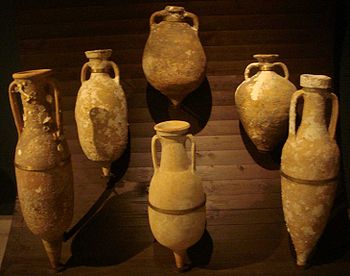
The last month of June the archaeological excavation of the two canned fish industries (known as the XI and XII industrial complexes) was completed. This work has lasted four years and incorporates an interdisciplinary study of its structures, with the most modern techniques ranging from biomolecular archeology to the study of organic waste adhered to the walls of saltwater basins. In these, the tuna was salted and the famous sauce (Garum) was produced, that so much fame gave to these Andalusian lands, in Rome and in all the corners of the Empire.
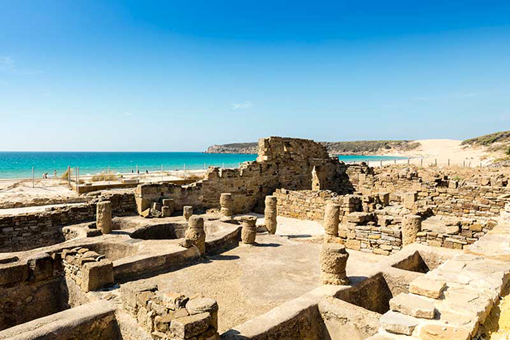
Basins for Garum

The same basins up close

Another basins for Garum
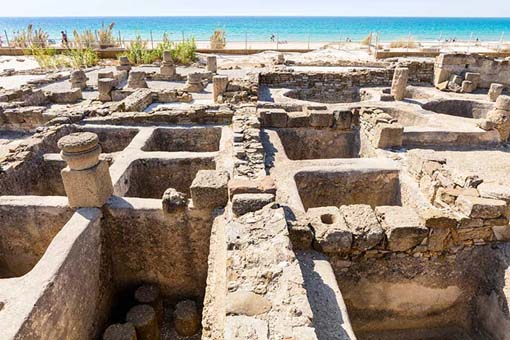
The basins up close
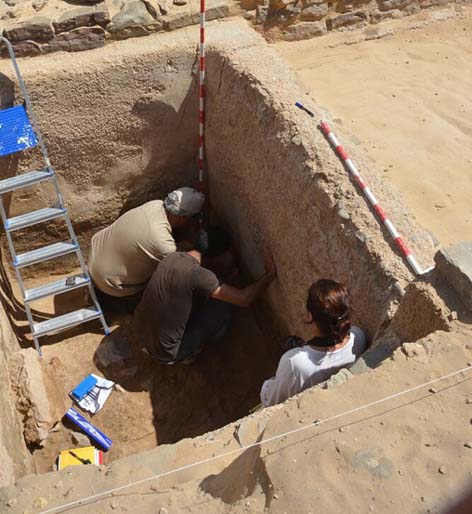
Excavation of a basin
Researchers from the University of Cádiz, after years of study, have come up with the formula of garum and market it, under the name of Flor de Garum, since 2014.
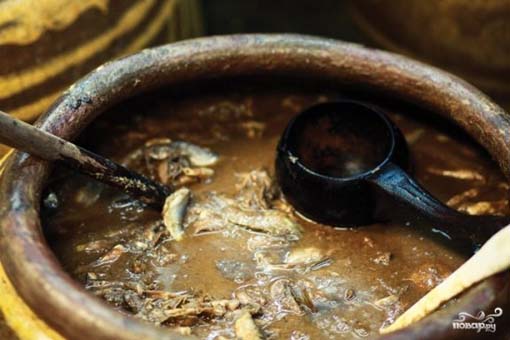
Cooking Garum

Sauce Flor de Garum
The research, carried out in Baelo Claudia, has allowed, for the first time in the world, to locate remains of salted tuna meat, from Roman times (called salsamenta by the Romans) or to determine the importance and uniqueness of local fish sauces, such as the garum of hedgehogs or the one made with aligotes.
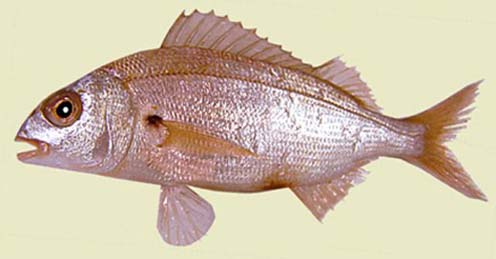
One Aligote
Likewise, they have made it possible to determine with precision the system of specialised quartering of the tunas, which today we call 'ronqueo', and which has its roots, at least, in Roman times. And to know, in detail, the exploitation of marine resources, in the waters of the strait, over time: from the exploitation of cetaceans to the use of mollusks for the production of fish sauces, such as the famous oyster garum; from shark fishing to the elaboration of fishmeal and fish oils.
 a 13,5 cm.jpg)
Ronqueo in the fish market of Barbate (Cadiz)
These studies place Baelo Claudia at the international forefront of the knowledge of the exploitation of marine resources, once again. In fact, in these field studies, more than twenty researchers have collaborated, in addition to doctoral students and students in training from Spain, Argentina, Ecuador, Italy, France and Mexico. These studies are supported and funded by research projects of the Ministry of Culture of the Junta de Andalucía and the State Plan for R + D + i of the Ministry of Science and Innovation, with the collaboration of more than a dozen universities and research centers, from several countries.
The study of the tuna bones of a pit has made it possible to reconstruct the system of selective cutting of these large animals, very similar to the "ronqueo" that is still being carried out, in a perfectionist way, in the tuna bed of the Strait of Gibraltar. And fishing gear and iron tools related to the cutting and filleting of these large migrators have also appeared.
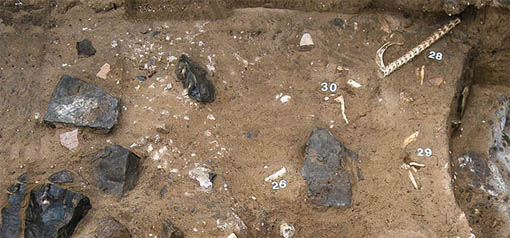
Remains of tuna bones
These findings "are extremely relevant because, due to their organic nature, they are not usually kept in the archaeological record, since it is a unicum and Baelo Claudia is one of the most important places in the world for knowledge of fishery and canning industry from Roman times, base of the craft traditions that have been maintained, in the Strait of Gibraltar, until scarce generations ago", according to Professor Bernal.
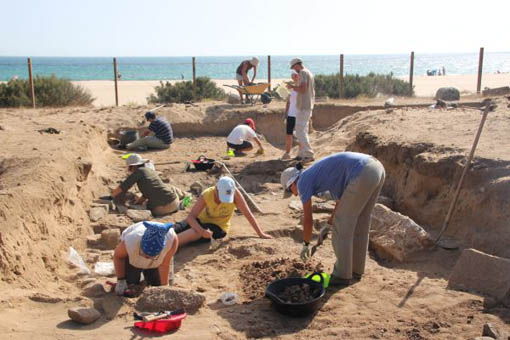
A part of the excavations
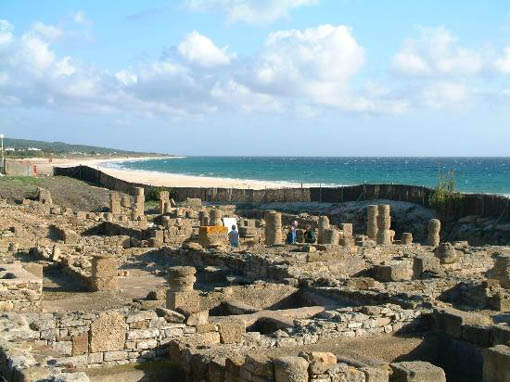
Another view of the excavations
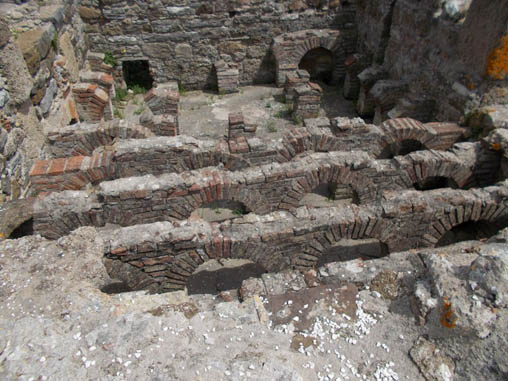
Salting factory

The salting factories in the background
Strolling through its streets, we recognise, in the remains of Baelo Claudia, the best preserved Roman city, in Spain. All the representative elements that constitute the essence of a city of the Roman´s time are located: the forum, the temples, the basilica, the market, the theater, the thermal baths, the industrial district, the aqueducts, the complete wall ...

A map of the main monuments in Baelo Claudia
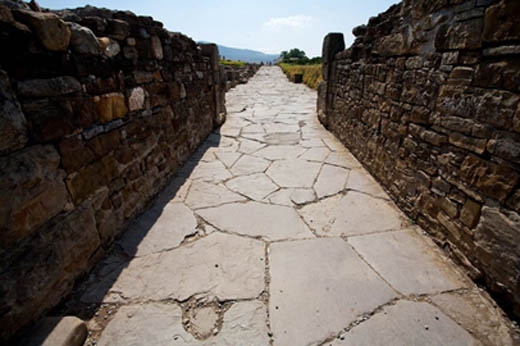
A street in Baelo Claudia
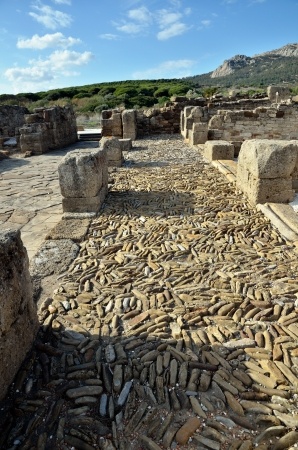
Another type of pavement
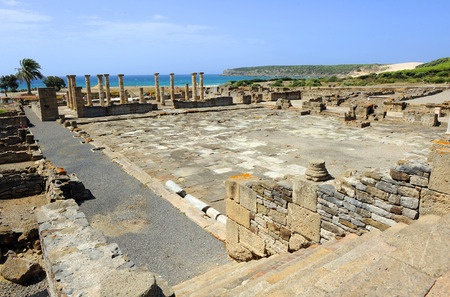
Remains of the Forum or Public square
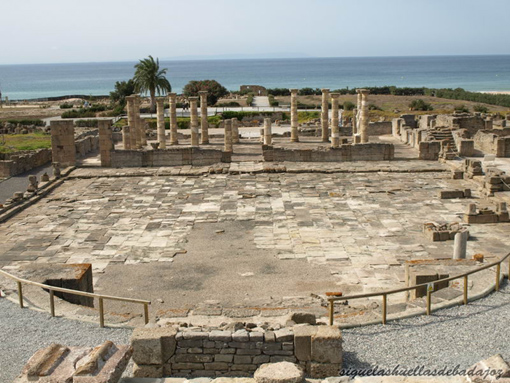
The Forum up close
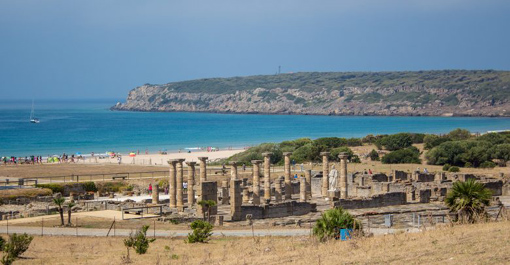
The Basilica or Palace of Justice next to the Forum
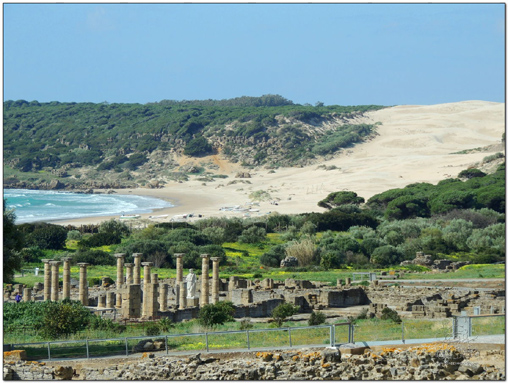
The Basilica up close
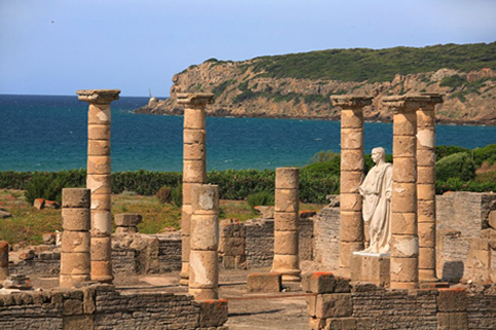
The Basilica from another angle
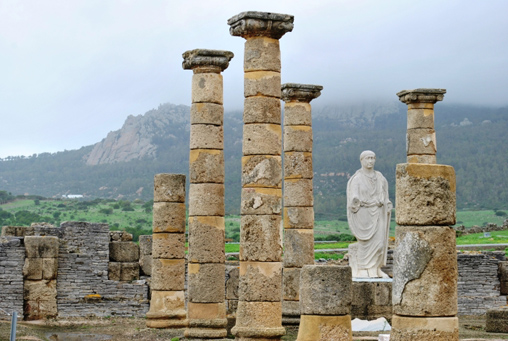
The statue of Trajano from another angle
Going down to the beach, you can find the two temples.

Some visitors looking at the ruins from one of the two temples
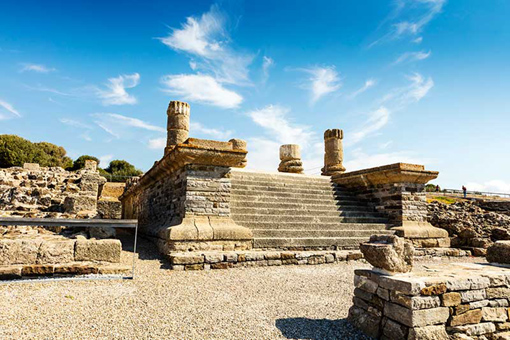
The Temple dedicated to the Goddess Isis
Here below you can see first the remains of the two temples and, secondly, on the left, the Basilica; in the background and on the right side, the dunes of Bolonia.

The ruins of the two Temples
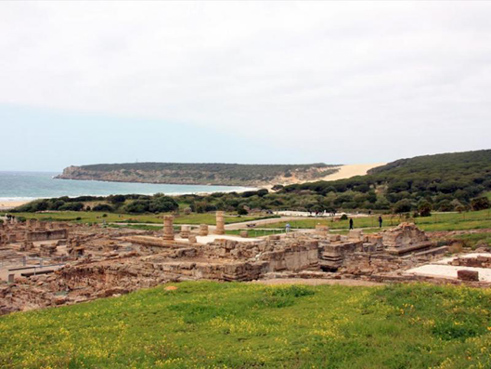
The Temples up close
Now you can see the Market of Baelo Claudia:
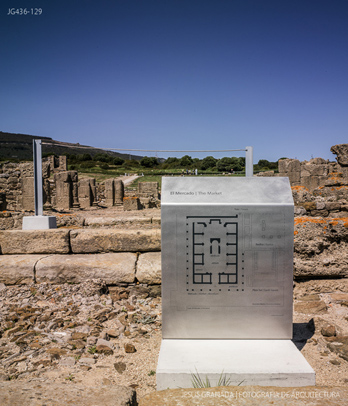
Remains of the Market
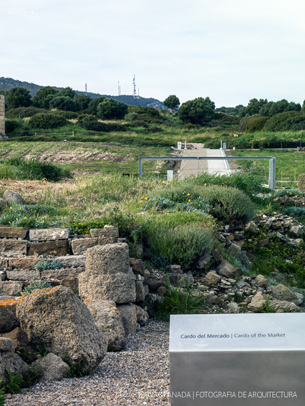
The Cardo of the Market
Note: Cardo is a term used in urban planning in the Roman Empire. It denotes a north-south facing street.

Another view of the Market
Here below, you can see another representative element of Baelo Claudia: the Theater.
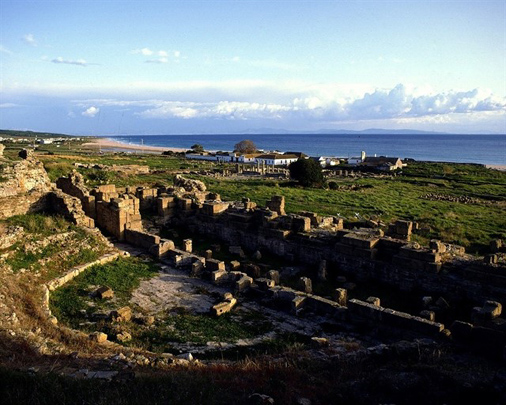
The Theater with the beach in the background
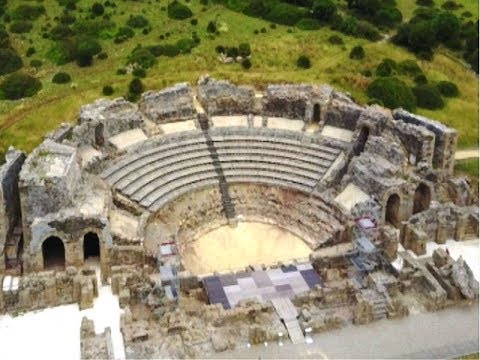
An aerial view of the Theater
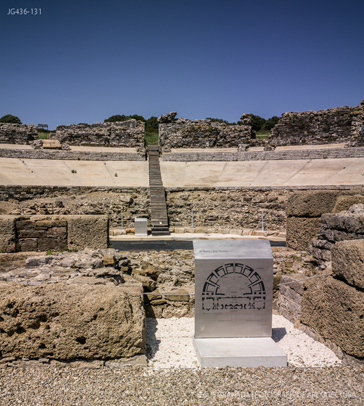
The Theater inside
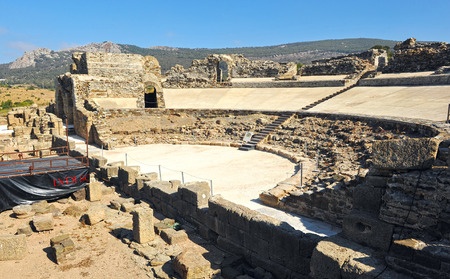
The Theater from the stage
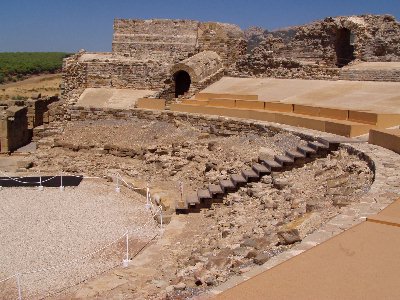
The terraces of the Theater
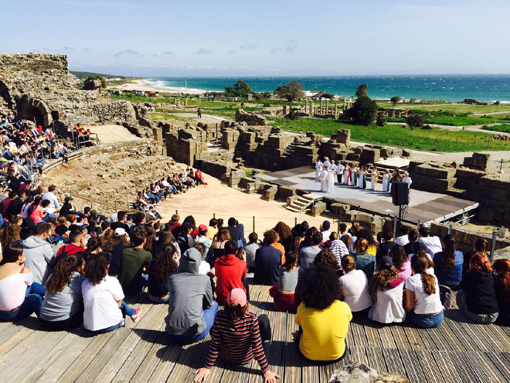
Performance of a play
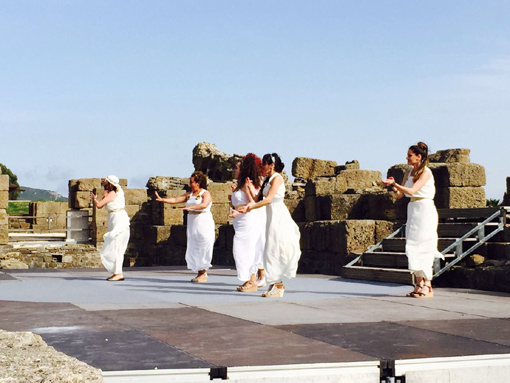
The actresses of the play
Just below, you can see the thermal baths:

The Thermal baths of Baelo Claudia
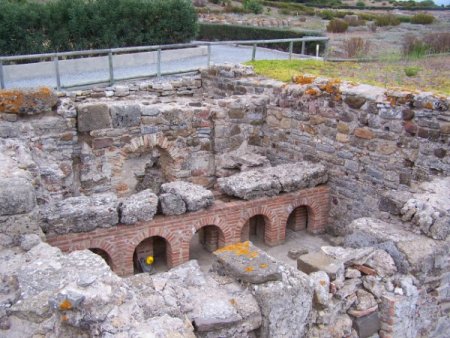
Another thermal baths

Other thermal baths up close
Now you will see some images of another representative element of Baelo Claudia: the Industrial district.
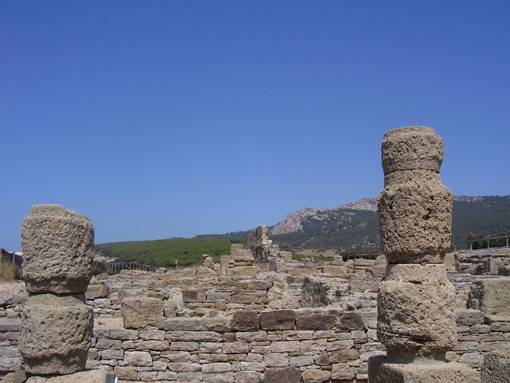
Access to the industrial district
Here you can see the residential area:

The residential area in the first place

Remains of some houses on the western edge of the city
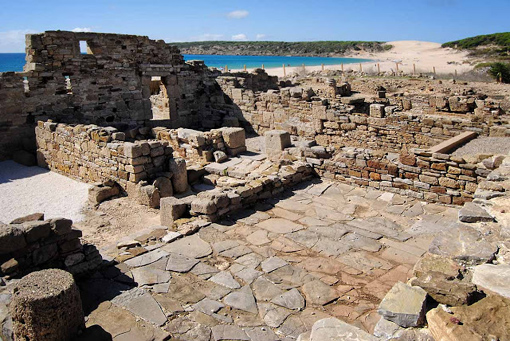
A house of Baelo Claudia
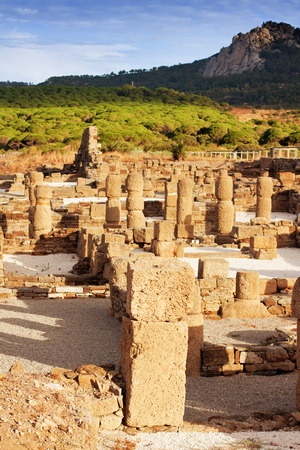
Remains of domus
Note: Domus is the Latin word with which a type of Roman house is known. The domus were the homes of families of a certain economic level, whose head of household bore the title of dominus.
Another representative element of Baelo Claudia was the Aqueduct:
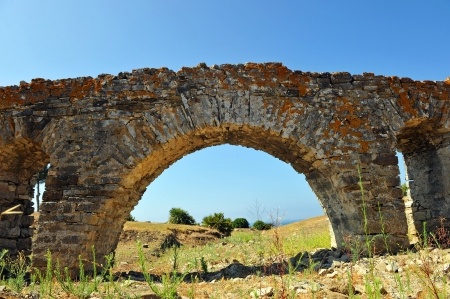
Aqueduct to transport drinking water

A general view of the aqueduct
Another representative element of Baelo Claudia is The Wall:
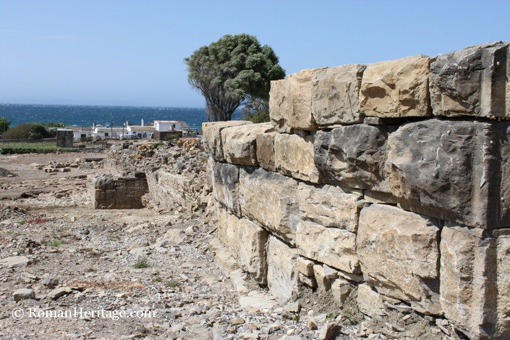
A part of the Wall
Outside the archaeological site of Baelo Claudia, you can see a very special tree, called Ombú, which is native to South America --and it is special, because it is unusual to see a tree like this in these latitudes--.
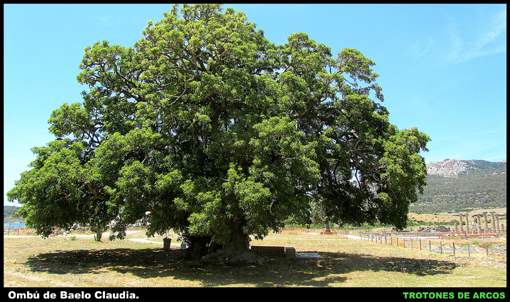
The Ombú
This Ombú of Baelo Claudia has a spectacular size, with a height of 13 metres, a forked shaft a few metres from the ground and an exceptional thickness of 7.5 metres perimeter.
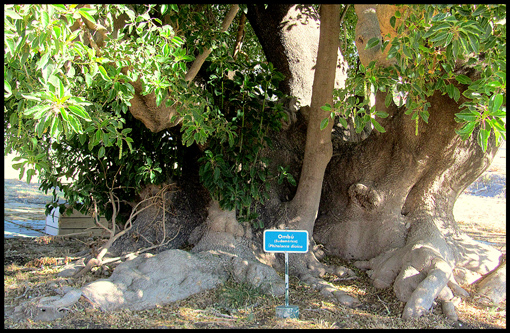
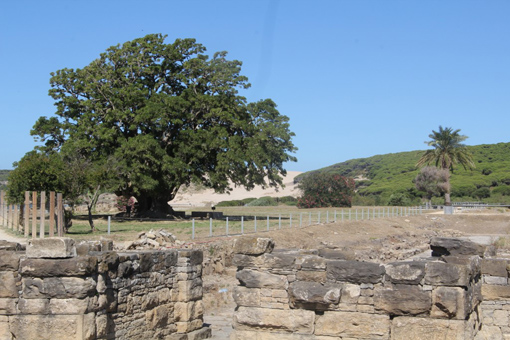
The Ombú from another angle
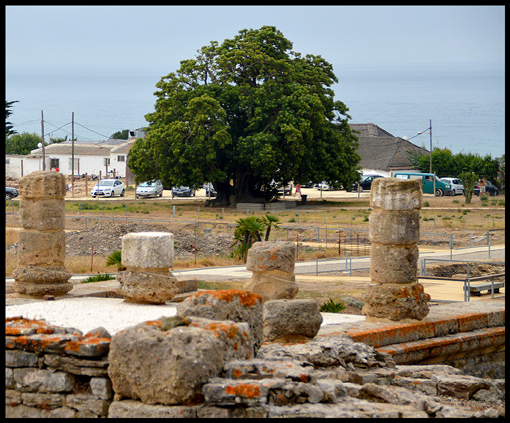
A restaurant with a parking on the left side of the picture
You can see a picture of the remains of one of the doors to enter Baelo Claudia:
.jpg)
East gate of the wall
On the left side you can see the Ombú; in the right side you can see the Basilica and, in the background, you can see the dunes of Bolonia.
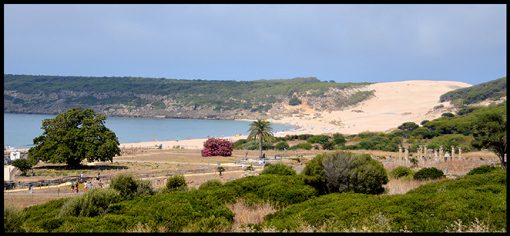
To visit the ruins of Baelo Claudia, you can park your car in that parking lot and, next to it, you will see a square building, where you will see a small museum, with images of Baelo Claudia, and you can also purchase the tickets you need to visit the ruins. If you want to ask for tickets there, you can call to the telephone number: 956 106 797 –although I can tell you that tickets are free--. But if you want information and an appointment to go with a group, you have to call the phone: 956 106 793.
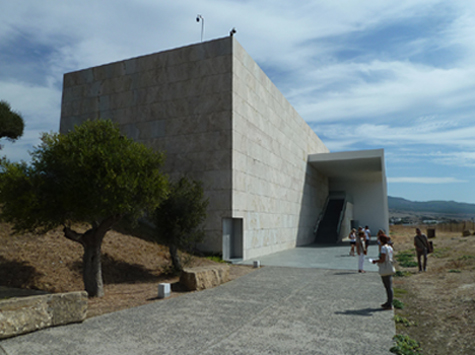
The entrance to the building museum
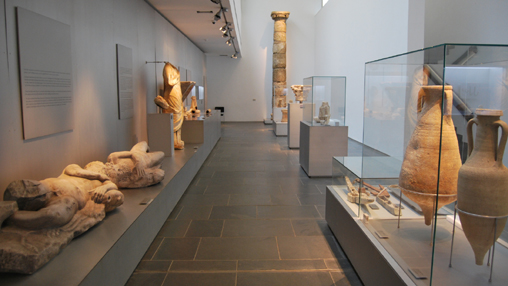
Some amphoras in the Museum
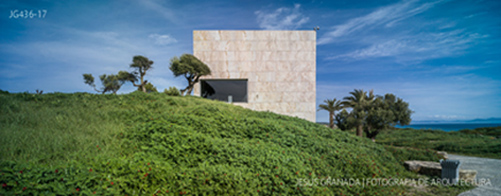
In the right side of the building you start your visit
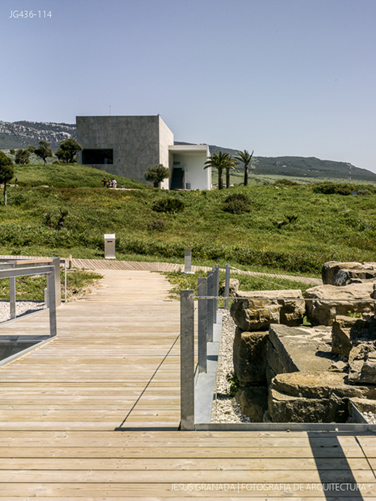
The building from the tour route to visit Baelo Claudia
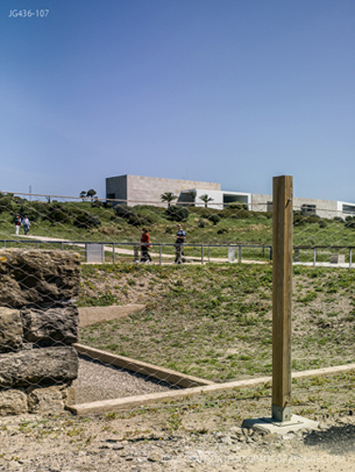
The building from another angle
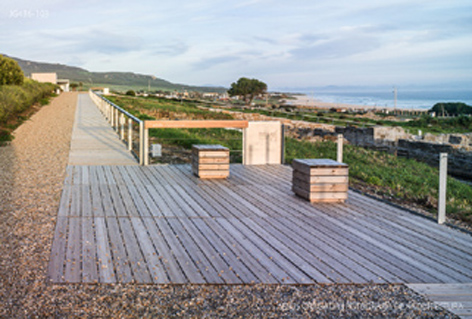
The Capitol area on the right side
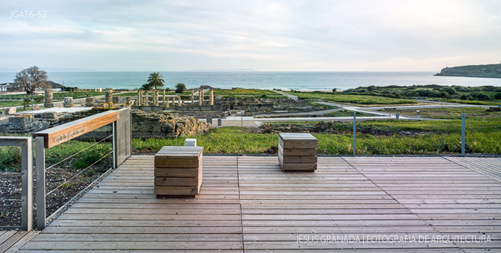
The Basilica from the Capitol viewpoint
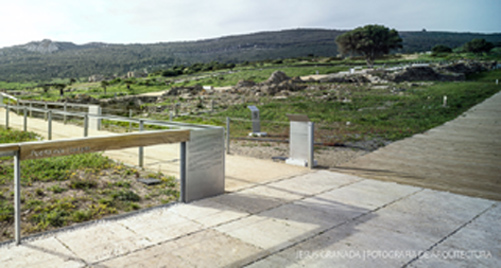
The east gate
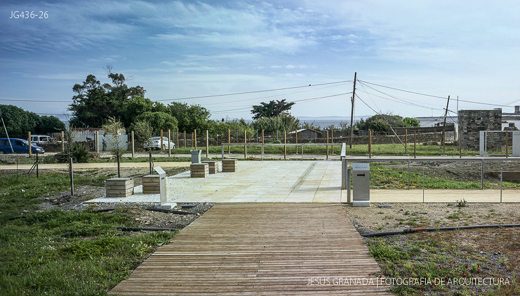
Another part of the tour route
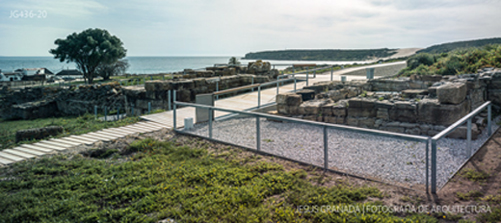
Another view of the tour route
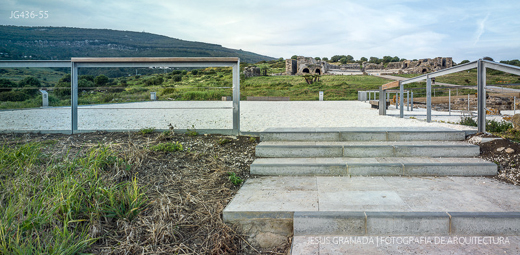
The Theater from the tour route
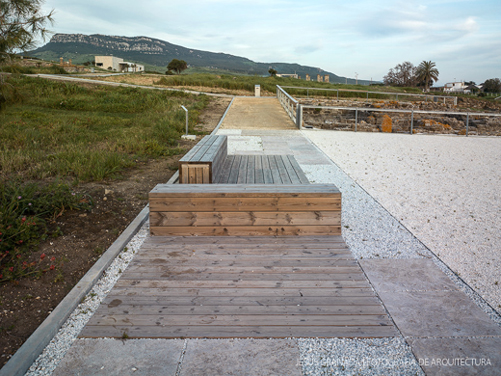
The Museum from another part of the tour route
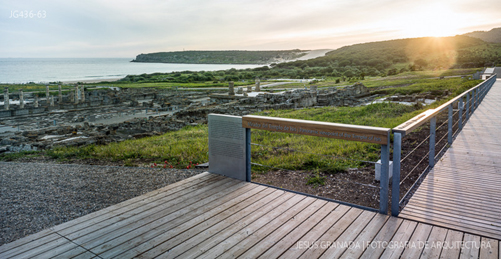
The Isis Temple viewpoint
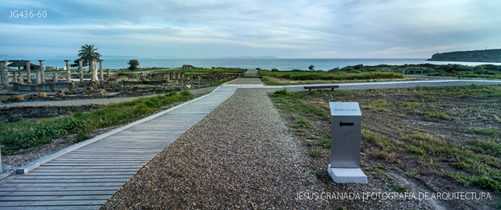
The Basilica in the left side
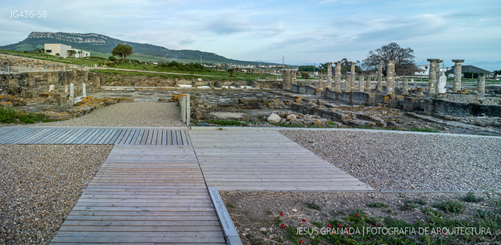
The Basilica in the right side
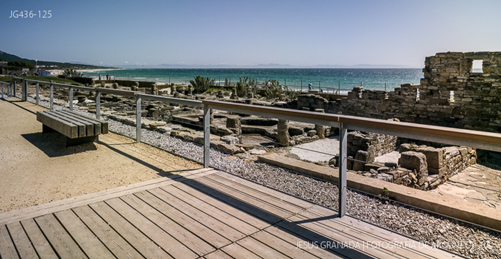
Factories zone
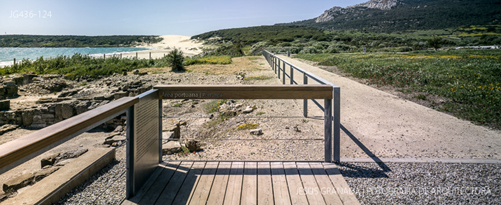
Port zone
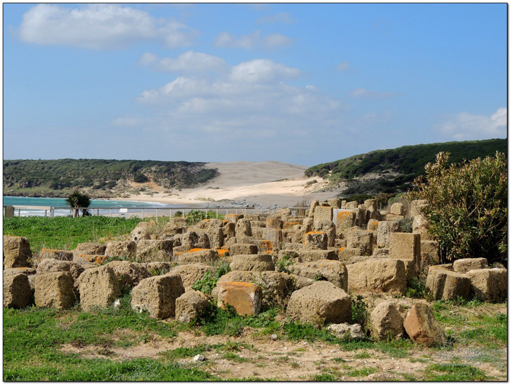
The last ruins close to the dunes
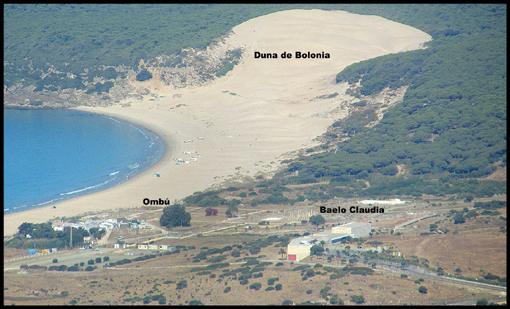
Aerial view of the Bolonia area
Well, I hope that you will like this article and hope that you can go to visit those interesting ruins of Baelo Claudia.
Until my next post, kind regards,
Luis.
Please click below:
